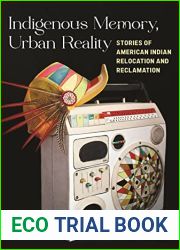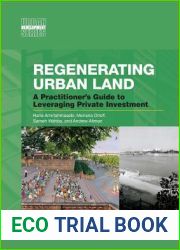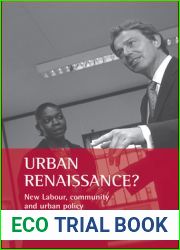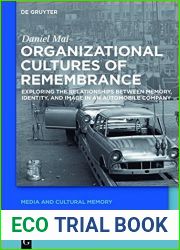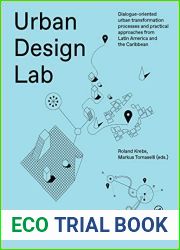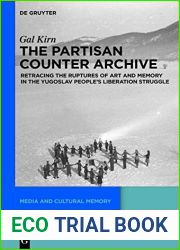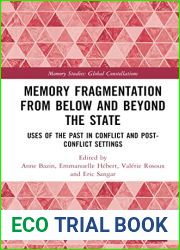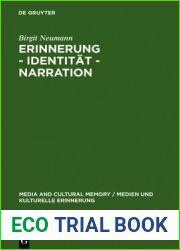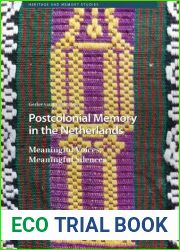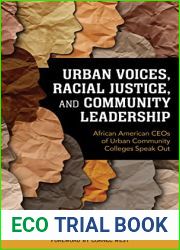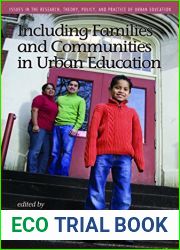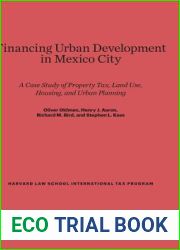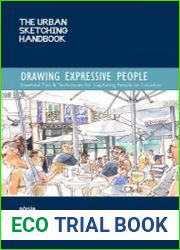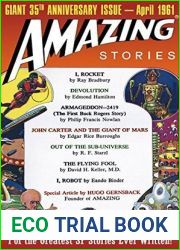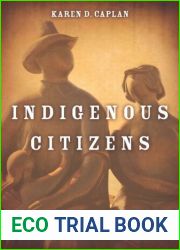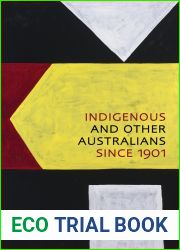
BOOKS - Indigenous Memory, Urban Reality: Stories of American Indian Relocation and R...

Indigenous Memory, Urban Reality: Stories of American Indian Relocation and Reclamation
Author: Michelle R. Jacobs
Year: January 10, 2023
Format: PDF
File size: PDF 3.3 MB
Language: English

Year: January 10, 2023
Format: PDF
File size: PDF 3.3 MB
Language: English

The book "Indigenous Memory, Urban Reality: Stories of American Indian Relocation and Reclamation" by Michelle Jacobs explores the complex and dynamic nature of contemporary American Indian identity in urban settings. The author conducted ethnographic research over two and a half years to examine how individuals assert and maintain their Native identities in the face of conflicting meanings and challenges. The book reveals that the concept of Indianness is fiercely contested among urban Native communities, with some individuals accused of being "fake" or "wannabes while others are accused of being exclusive and policing the boundaries of Indianness. Through the interconnected stories of "relocators" and "reclaimers the book provides a nuanced understanding of who can legitimately claim and express American Indian identities, shedding light on how race is constructed and contested in modern society. The book begins by highlighting the significant increase in the number of people claiming to be American Indian, from just over half a million in 1960 to over three million in 2013. Additionally, it notes that seven out of ten Americans Indians reside in or near cities, rather than tribal communities, and this number is growing.
В книге Мишель Джейкобс «Indigenous Memory, Urban Reality: Stories of American Indian Relocation and Reclamation» исследуется сложная и динамичная природа современной идентичности американских индейцев в городских условиях. Автор провел этнографическое исследование в течение двух с половиной лет, чтобы изучить, как люди утверждают и поддерживают свою родную идентичность перед лицом противоречивых смыслов и проблем. Книга показывает, что концепция индийства яростно оспаривается среди городских общин коренных народов, причем некоторые люди обвиняются в том, что они «поддельные» или «wannabes», в то время как другие обвиняются в том, что они являются исключительными и контролируют границы индийства. Через взаимосвязанные истории о «переселенцах» и «возвратниках» книга дает тонкое понимание того, кто может законно претендовать и выражать идентичность американских индейцев, проливая свет на то, как раса строится и оспаривается в современном обществе. Книга начинается с освещения значительного увеличения числа людей, утверждающих, что они являются американскими индейцами, с чуть более полумиллиона в 1960 году до более трех миллионов в 2013 году. Кроме того, в нем отмечается, что семь из десяти американцев-индейцев проживают в городах или рядом с ними, а не в племенных общинах, и это число растет.
livre de Michel Jacobs, « Indigenous Memory, Urban Reality : Stories of American Indian Relocation and Reclamation », explore la nature complexe et dynamique de l'identité moderne des Indiens d'Amérique en milieu urbain. L'auteur a mené une étude ethnographique pendant deux ans et demi pour étudier comment les gens prétendent et maintiennent leur identité natale face à des significations et des problèmes contradictoires. livre montre que la notion d'Inde est violemment contestée parmi les communautés autochtones urbaines, certaines personnes étant accusées d'être « fausses » ou « wannabes », tandis que d'autres sont accusées d'être exclusives et de contrôler les frontières de l'Inde. À travers des histoires interconnectées sur les « déplacés » et les « rapatriés », le livre fournit une compréhension subtile de ceux qui peuvent légitimement revendiquer et exprimer l'identité des Indiens d'Amérique, mettant en lumière la façon dont la race est construite et contestée dans la société moderne. livre commence par mettre en lumière une augmentation considérable du nombre de personnes qui se disent amérindiennes, passant d'un peu plus d'un demi-million en 1960 à plus de trois millions en 2013. En outre, il indique que sept Amérindiens sur dix vivent dans des villes ou à proximité, plutôt que dans des communautés tribales, et ce nombre augmente.
libro de Michelle Jacobs «Indigenous Memory, Urban Reality: Stories of American Indian Relation and Reclamation» explora la naturaleza compleja y dinámica de la identidad moderna de los indios americanos en entornos urbanos. autor realizó un estudio etnográfico durante dos y medio para estudiar cómo las personas reivindican y mantienen su identidad nativa frente a significados y problemas contradictorios. libro muestra que el concepto de indianismo está siendo desafiado ferozmente entre las comunidades indígenas urbanas, con algunas personas acusadas de ser «falsificadas» o «wannabes», mientras que otras son acusadas de ser exclusivas y controlar las fronteras de la India. A través de historias interrelacionadas sobre «inmigrantes» y «retornados», el libro proporciona una sutil comprensión de quién puede legítimamente reivindicar y expresar la identidad de los indios americanos, arrojando luz sobre cómo se construye y desafía la raza en la sociedad moderna. libro comienza con la cobertura de un aumento significativo en el número de personas que afirman ser indios americanos, de poco más de medio millón en 1960 a más de tres millones en 2013. Además, señala que siete de cada diez indios americanos viven en ciudades o cerca de ellas, no en comunidades tribales, y ese número está creciendo.
O livro «Indigenous Memory, Urban Reality: Stories of American Indian Relocation and Replamation», de Michelle Jacobs, explora a natureza complexa e dinâmica da identidade moderna dos índios americanos em ambientes urbanos. O autor fez um estudo etnográfico ao longo de dois anos e meio para investigar como as pessoas afirmam e mantêm sua identidade nativa diante de significados e problemas contraditórios. O livro mostra que o conceito da índia é duramente contestado entre as comunidades indígenas urbanas, sendo que algumas pessoas são acusadas de serem «falsas» ou «wannabes», enquanto outras são acusadas de serem exclusivas e controlarem as fronteiras da Índia. Através de histórias interligadas sobre «deslocados» e «retornadores», o livro oferece uma compreensão sutil de quem pode reivindicar e expressar legitimamente a identidade dos índios americanos, lançando luz sobre a forma como a raça é construída e contestada na sociedade moderna. O livro começa com um aumento significativo no número de pessoas que afirmam ser índios americanos, passando de pouco mais de meio milhão em 1960 para mais de três milhões em 2013. Além disso, diz que sete em cada dez índios americanos vivem em cidades ou perto delas, e não em comunidades tribais, número que vem aumentando.
Il libro di Michelle Jacobs "Indigenous Memory, Urban Reality" Stories of American Indian Relocation and Reclamation "esamina la natura complessa e dinamica dell'identità moderna degli indiani americani in ambienti urbani. L'autore ha condotto una ricerca etnografica per due anni e mezzo per studiare come le persone sostengono e sostengono la loro identità di origine di fronte a significati e problemi contraddittori. Il libro mostra che il concetto di indianità è fortemente contestato tra le comunità indigene della città, con alcune persone accusate di essere «false» o «wannabes», mentre altre sono accusate di essere esclusive e di controllare i confini dell'India. Attraverso storie interconnesse di «sfollati» e «ritorni», il libro fornisce una delicata comprensione di chi può legittimamente rivendicare e esprimere l'identità degli indiani americani, mettendo in luce come la razza viene costruita e contestata nella società moderna. Il libro inizia con la copertura di un significativo aumento del numero di persone che affermano di essere indiani americani, passando da poco più di mezzo milione nel 1960 a oltre tre milioni nel 2013. Inoltre, afferma che sette americani indiani su dieci vivono in città o vicino a loro, piuttosto che in comunità tribali, e questo numero è in aumento.
Michelle Jacobs untersucht in ihrem Buch „Indigenous Memory, Urban Reality: Stories of American Indian Relocation and Reclamation“ die komplexe und dynamische Natur der zeitgenössischen Identität der Indianer in urbanen Umgebungen. Der Autor führte zweieinhalb Jahre lang eine ethnographische Studie durch, um zu untersuchen, wie Menschen ihre eigene Identität angesichts widersprüchlicher Bedeutungen und Probleme behaupten und aufrechterhalten. Das Buch zeigt, dass das Konzept des Indianertums unter den städtischen indigenen Gemeinschaften heftig umstritten ist, wobei einige Menschen beschuldigt werden, „Fake“ oder „Möchtegern“ zu sein, während andere beschuldigt werden, außergewöhnlich zu sein und die Grenzen des Indianertums zu kontrollieren. Durch zusammenhängende Geschichten über „Umsiedler“ und „Rückkehrer“ gibt das Buch einen subtilen Einblick, wer die Identität der amerikanischen Indianer legitim beanspruchen und ausdrücken kann, und beleuchtet, wie Rasse in der heutigen Gesellschaft aufgebaut und herausgefordert wird. Das Buch beginnt mit der Berichterstattung über einen signifikanten Anstieg der Zahl der Menschen, die behaupten, Indianer zu sein, von etwas mehr als einer halben Million im Jahr 1960 auf mehr als drei Millionen im Jahr 2013. Darüber hinaus stellt es fest, dass sieben von zehn amerikanischen Indianern in oder in der Nähe von Städten leben und nicht in Stammesgemeinschaften, und diese Zahl steigt.
Książka Michelle Jacobs „Rdzenna pamięć, miejska rzeczywistość: historie amerykańskiej relokacji i rekultywacji Indian” bada złożony i dynamiczny charakter współczesnej amerykańskiej tożsamości indyjskiej w środowiskach miejskich. Autor prowadził badania etnograficzne przez okres dwóch i pół roku, aby zbadać, w jaki sposób ludzie twierdzą i utrzymują swoją rodzimą tożsamość w obliczu sprzecznych znaczeń i wyzwań. Z książki wynika, że pojęcie indiaństwa jest zaciekle kwestionowane wśród miejskich społeczności tubylczych, a niektórzy oskarżeni są o „fałszywe” lub „wannabes”, podczas gdy inni są oskarżani o bycie wyłącznym i kontrolowanie granic indiaństwa. Poprzez splatane historie „migrantów” i „powracających”, książka zapewnia niuansowane zrozumienie, kto może legalnie twierdzić i wyrazić amerykańską tożsamość Indian, rzucając światło na jak rasa jest budowana i kwestionowane we współczesnym społeczeństwie. Książka zaczyna się od podkreślenia znacznego wzrostu liczby osób podających się za Indian amerykańskich, z nieco ponad pół miliona w 1960 roku do ponad trzech milionów w 2013 roku. Ponadto zauważa, że siedmiu na dziesięciu indyjskich Amerykanów żyje w miastach lub w ich pobliżu, a nie we wspólnotach plemiennych, a liczba ta rośnie.
''
Michelle Jacobs'ın "Yerli Bellek, Kentsel Gerçeklik: Amerikan Kızılderili Yer Değiştirme ve Islah Hikayeleri'adlı kitabı, kentsel ortamlarda çağdaş Amerikan Kızılderili kimliğinin karmaşık ve dinamik doğasını araştırıyor. Yazar, insanların çelişkili anlamlar ve zorluklar karşısında kendi yerel kimliklerini nasıl öne sürdüklerini ve sürdürdüklerini incelemek için iki buçuk yıllık bir süre boyunca etnografik araştırmalar yaptı. Kitap, Kızılderililik kavramının kentsel yerli topluluklar arasında şiddetle tartışıldığını, bazı insanların "sahte" veya "özenti" olmakla suçlandığını, diğerlerinin ise Hindistan'ın sınırlarını dışlamak ve kontrol etmekle suçlandığını gösteriyor. "Göçmenler've" geri dönenlerin "iç içe geçmiş hikayeleri aracılığıyla kitap, Amerikan Kızılderili kimliğini meşru bir şekilde iddia edip ifade edebilen, modern toplumda ırkın nasıl inşa edildiğine ve itiraz edildiğine ışık tutan nüanslı bir anlayış sunuyor. Kitap, 1960 yılında yarım milyondan fazla, 2013 yılında üç milyondan fazla olan Amerikan yerlisi olduğunu iddia eden insanların sayısındaki önemli bir artışı vurgulayarak başlıyor. Buna ek olarak, on Hintli Amerikalıdan yedisinin kabile topluluklarından ziyade şehirlerde veya yakınında yaşadığını ve bu sayının arttığını belirtiyor.
كتاب ميشيل جاكوبس «ذاكرة السكان الأصليين، الواقع الحضري: قصص نقل واستصلاح الهنود الأمريكيين» يستكشف الطبيعة المعقدة والديناميكية للهوية الهندية الأمريكية المعاصرة في البيئات الحضرية. أجرى المؤلف بحثًا إثنوغرافيًا على مدار عامين ونصف العام لفحص كيفية تأكيد الناس لهويتهم الأصلية والحفاظ عليها في مواجهة المعاني والتحديات المتضاربة. يُظهر الكتاب أن مفهوم Indianness متنازع عليه بشدة بين مجتمعات السكان الأصليين الحضرية، حيث يُتهم بعض الأشخاص بأنهم «مزيفون» أو «متمنون»، بينما يُتهم آخرون بأنهم حصريون ويسيطرون على حدود Indianness. من خلال القصص المتشابكة عن «المهاجرين» و «العائدين»، يقدم الكتاب فهمًا دقيقًا لمن يمكنه المطالبة بالهوية الهندية الأمريكية والتعبير عنها بشكل شرعي، مما يلقي الضوء على كيفية بناء العرق والتنازع عليه في المجتمع الحديث. يبدأ الكتاب بتسليط الضوء على زيادة كبيرة في عدد الأشخاص الذين يزعمون أنهم هنود أمريكيون، من ما يزيد قليلاً عن نصف مليون في عام 1960 إلى أكثر من ثلاثة ملايين في عام 2013. بالإضافة إلى ذلك، تشير إلى أن سبعة من كل عشرة أمريكيين هنود يعيشون في المدن أو بالقرب منها بدلاً من المجتمعات القبلية، وهذا العدد آخذ في الازدياد.
米歇爾·雅各布斯(Michelle Jacobs)的著作《土著記憶,城市現實:美國印第安人關系和娛樂的故事》探討了現代印第安人在城市環境中身份的復雜而動態的性質。作者進行了兩半的人種學研究,以研究面對相互矛盾的含義和問題,人們如何主張和維護自己的本土身份。該書表明,印度的概念在城市土著社區中引起了激烈的爭議,有些人被指控為「假」或「想要」,而另一些人則被指控為例外並控制著印度的邊界。該書通過有關「移民」和「返回者」的相互聯系的故事,對誰可以合法主張和表達美洲印第安人的身份提供了微妙的見解,闡明了種族在現代社會中的建立和競爭方式。該書首先涵蓋了自稱是美洲印第安人的人數的大幅增加,從1960的略多於50萬人增加到2013的超過300萬人。此外,報告指出,十分之七的美洲印第安人居住在城市內或附近而不是部落社區,這一數字正在上升。







